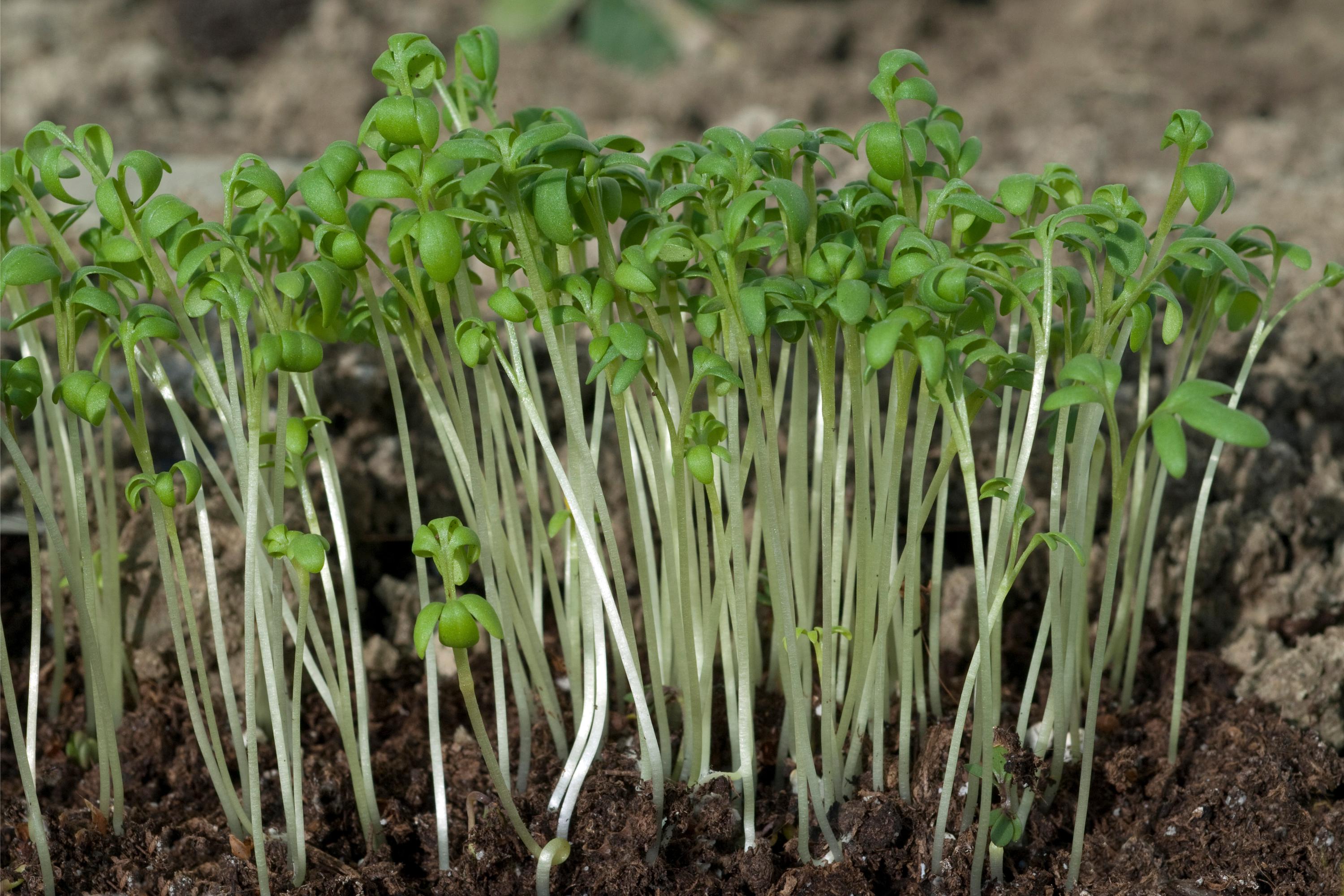Gardencress Pepperweed
(Lepidium sativum)

Description
Cress (Lepidium sativum), sometimes referred to as garden cress (or curly cress) to distinguish it from similar plants also referred to as cress (from old Germanic cresso which means sharp, spicy), is a rather fast-growing, edible herb. Garden cress is genetically related to watercress and mustard, sharing their peppery, tangy flavour and aroma. In some regions, garden cress is known as mustard and cress, garden pepper cress, pepperwort, pepper grass, or poor man's pepper. This annual plant can reach a height of 60 cm (24 in), with many branches on the upper part. The white to pinkish flowers are only 2 mm (1⁄16 in) across, clustered in small branched racemes. When consumed raw, cress is a high-nutrient food containing substantial content of vitamins A, C and K and several dietary minerals. Garden cress is commercially grown in England, France, and Scandinavia. Cultivation of cress is practical both on mass scales and on the individual scale. Garden cress is suitable for hydroponic cultivation and thrives in slightly alkaline water. In many local markets, the demand for hydroponically grown cress can exceed available supply, partially because cress leaves are not suitable for distribution in dried form, so they can only be partially preserved. Consumers commonly acquire cress as seeds or (in Europe) from markets as boxes of young live shoots. Edible shoots are typically harvested in one to two weeks after planting, when they are 5–13 cm (2–5 in) tall. Garden cress is added to soups, sandwiches and salads for its tangy flavour. It is also eaten as sprouts, and the fresh or dried seed pods can be used as a peppery seasoning (haloon).In the United Kingdom, cut cress shoots are commonly used in sandwiches with boiled eggs, mayonnaise and salt. Raw cress is 89% water, 6% carbohydrates (including 1% dietary fiber), 3% protein and less than 1% fat (table). In a 100-gram (3+1⁄2-ounce) reference quantity, raw cress supplies 134 kilojoules (32 kilocalories) of food energy and numerous nutrients in significant content, including vitamin K (516% of the Daily Value, DV), vitamin C (83% DV) and vitamin A (43% DV). Among dietary minerals, manganese levels are high (26% DV) while several others, including potassium and magnesium, are in moderate content (table).
Taxonomic tree:







